How to Choose the Best Deck Material for Your Home? 5 Types
-
Pete Ortiz
- Last updated:
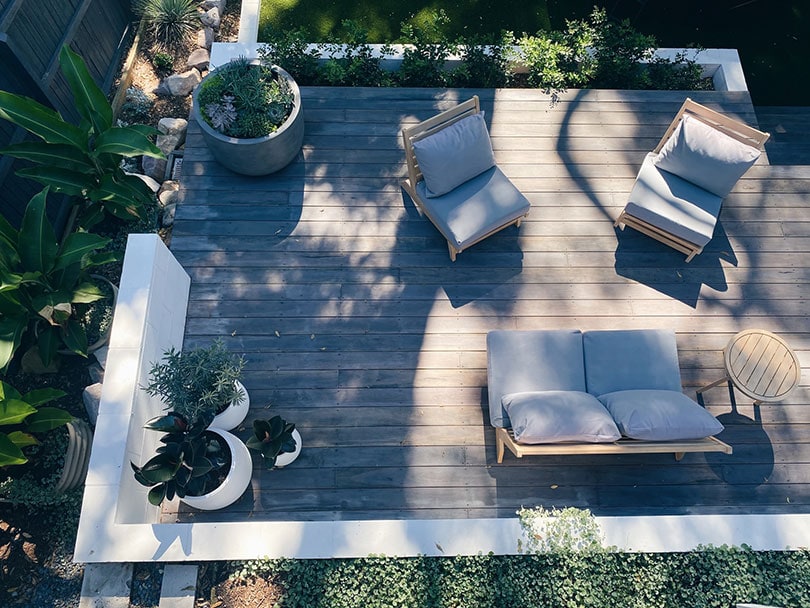
Choosing the right material for a new deck can be stressful. Decks are major investments that are supposed to last years. A new deck can change the entire complexion of your home and can cost thousands of dollars to complete. No one wants to choose the wrong material for their deck and end up disappointed after just a couple of years. So how do you choose the best deck material for your home?
There are four key components to consider while deciding on the final type of material for your deck. In order to make the best decision, you should consider these five things: budget, appearance, typical usage, accessories, and your environment. This brief guide will go over each of these factors in detail to help you make the best decision possible.
Things to Consider
Budget
One of the most significant considerations before making a final decision about your deck is the budget. Decks are expensive, and certain materials are much more expensive than others. Pressure treated wood is generally the cheapest option, followed by certain composite decks and then specialty wood decks. If you are looking to build a deck on a budget, you will likely settle on 5/4 pressure treated pine decking.
Another factor that plays into your overall budget is the size of your deck. Small decks might leave enough room in the budget. On the other hand, some decks can be extremely large. Large decks are going to cost a lot more than smaller decks. If you are looking at a high-end material like cedar or Ipe, that final bill could be extremely high.
Setting a budget early on will help you quickly narrow down your options for materials. Since some decking is prohibitively expensive, a budget will help make your overall picture much clearer.
Appearance
Another important factor is the appearance of your deck. Pressure treated decking is very basic in its appearance and does not offer a lot in the way of customization or variation. If you are trying to go for a specific look, you might want to look at composite decking. Composite decking is manufactured with dozens of different colors, styles, and grain patterns that allow you to easily customize the look of your deck to match your vision and style perfectly. If you have a specific vision in mind for your deck, composite decking is likely the best way to go.
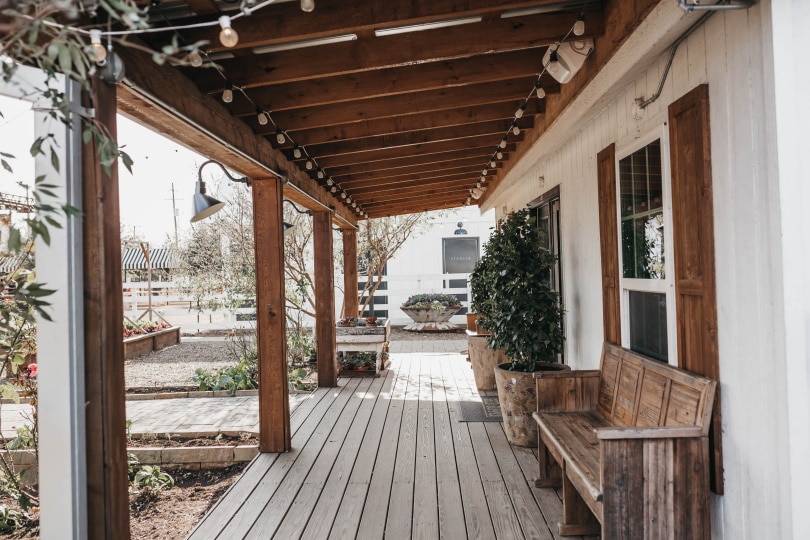
Typical Usage
How often do you plan on using your deck? Will people be on the deck a lot or just seasonally? The typical usage of a deck can heavily influence what material you should be looking at. Composite decking is designed to last for decades with the right care, and some new composite designs even remain cool during the summer heat. That means no one will burn their feet when they walk outside without shoes on.
Do you have a lot of deck furniture or a pool? You might want to consider Ipe, which is extremely hard and scratch resistant. Cedar looks great and smells amazing, but it is fairly soft and does not hold up to heavy furniture or high foot traffic in the same way that pine does.
Some people use their decks every day, while other people only use them sparingly. Take that into consideration before making a final decision.
Environment
The environment can play a huge role in what decking material is best for you. Environmental factors such as temperature, humidity, annual rain, snowfall, wind, ice, and direct sunlight can all change what material is best for you. Pressure treated pine is great in many situations, but it can quickly become worn down by frequent sun and rain, requiring staining or water sealing to retain its health.
In areas with lots of heavy weather or sunlight, you might want to consider composite decking over a natural wood decking. If you have a shaded deck in a temperate climate with little in the way of extreme weather, you can probably safely choose natural wood decking without much upkeep or maintenance worries.
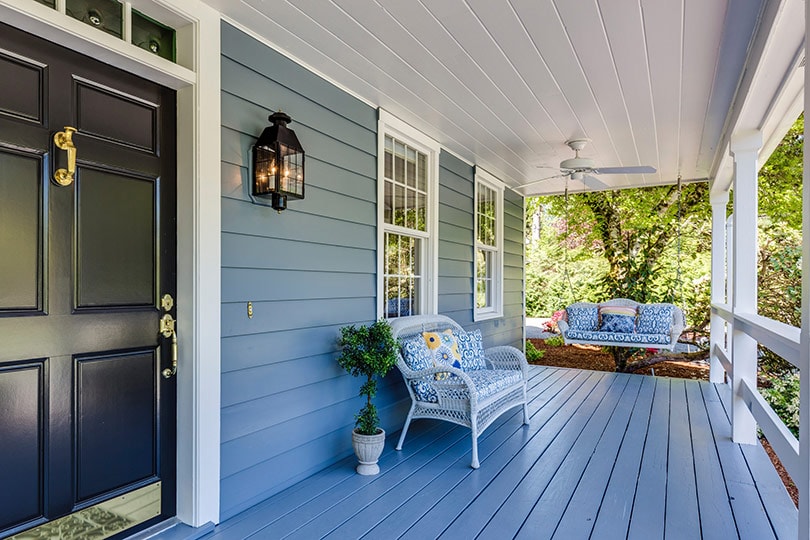
Add-ons, Accessories, and Extras
The last thing to consider is how much you want to invest in add-ons, accessories, upgrades, and extras. Some people prefer a simple deck with a simple railing. Other people want to go all out with designer railings, embedded lighting, fancy stairs, and elaborate posts and postcaps.
These things need to be factored into your budget and your choice of material. Pressure-treated decking is constrained in what types of accessories you can seamlessly install with it. Composite decking often has full systems for lighting and railings that can be installed easily that provide seamless looks and natural flow.
If you want a lot of additional extras for your outdoor oasis, you probably want to order an entire deck system from a composite manufacturer. If you want a simple deck with simple railings and basic steps, you can probably stick with pressure-treated wood and save some money.
The 5 Types of Decking Material
There are five common types of decking material. The five types of decking are pressure treated pine, synthetic composite, natural composite, cedar, and Ipe. Each type of material has its own set of pros and cons that differentiates it from its peers.
1. Pressure Treated Pine
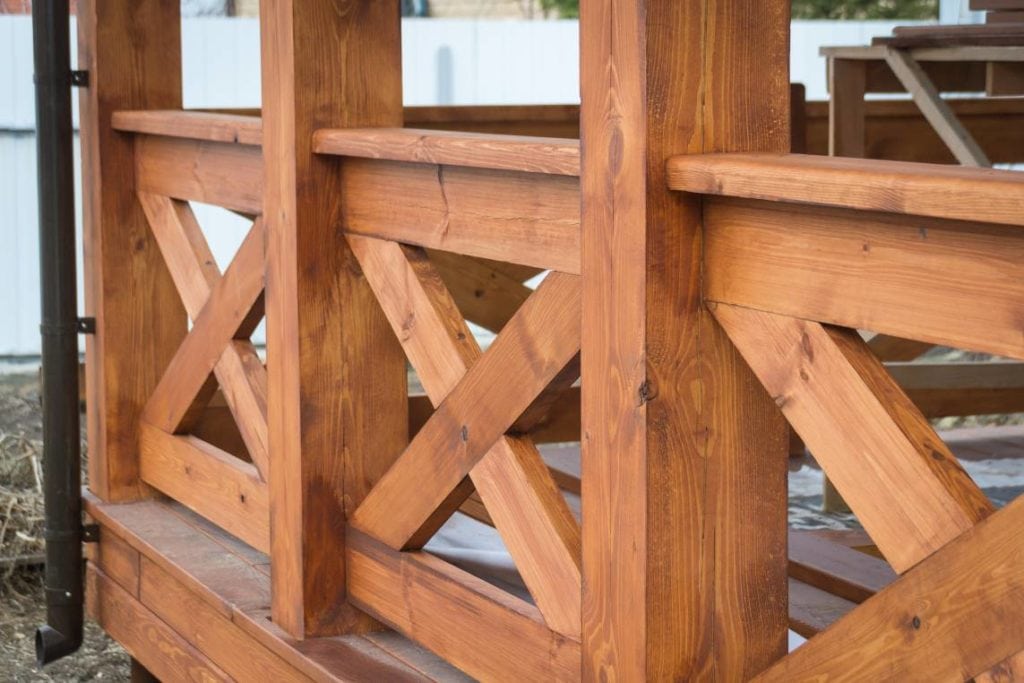
- Affordable
- Easy to obtain
- Easy to install
- Hard
- Bland look
- Does not last as long as other materials
2. Synthetic Composite

- Can last decades
- Tons of styles available
- Lots of extras and accessories to spruce up your look
- Much more expensive than pine
- Tricky installation for some brands
3. Natural Composite
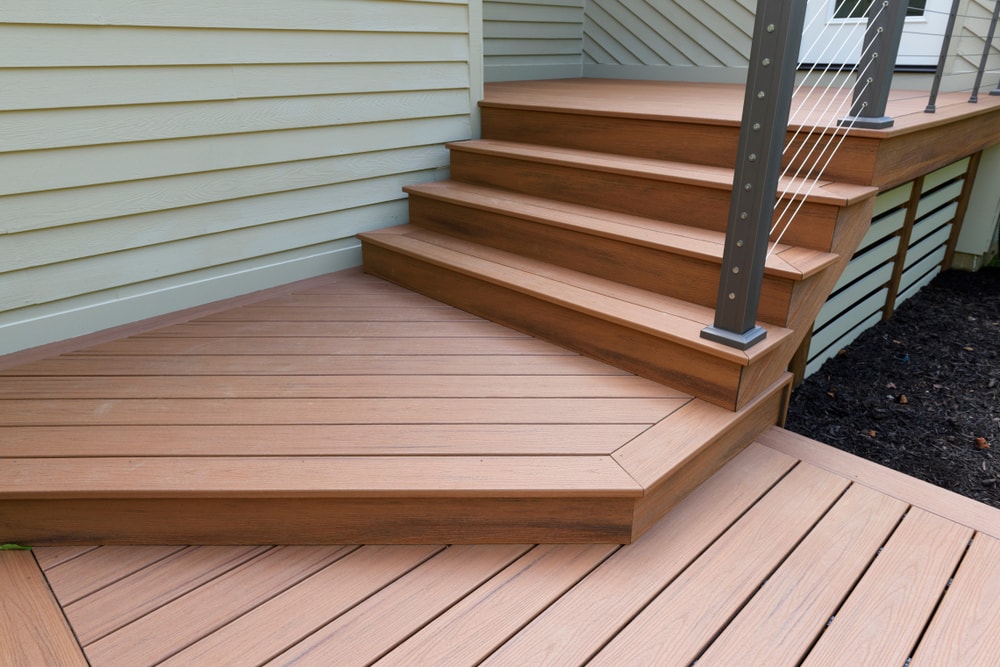
- Lasts longer than pressure treated
- Lighter than synthetic composite
- Contains natural wood materials like bamboo
- Hard to obtain in some markets
- Not as durable as synthetic composite
4. Cedar

- Nice color
- Soft under foot
- Very weather and bug resistant
- Regionally expensive
- Prone to scratching
- Can become splintery
5. Ipe

- Amazing look
- Natural wood
- Extremely hard
- Can last decades
- Very expensive
- Requires periodic oiling to retain color
- Hardness makes it a chore to install
Conclusion
There are plenty of great decking options on the market for you to choose from. Picking the best decking for you will depend on a variety of factors, including your budget and your vision for your deck. Some decking materials can be very expensive, so be sure to save enough money if you want to get an enhanced deck material like Ipe or full synthetic composite. Better deck materials typically last longer than basic deck materials, but it comes with an advanced cost. The final choice is going to be entirely up to you, and in many cases, it is hard to make a poor choice.
Featured Image Credit: Cameron Smith, Unsplash
Contents




